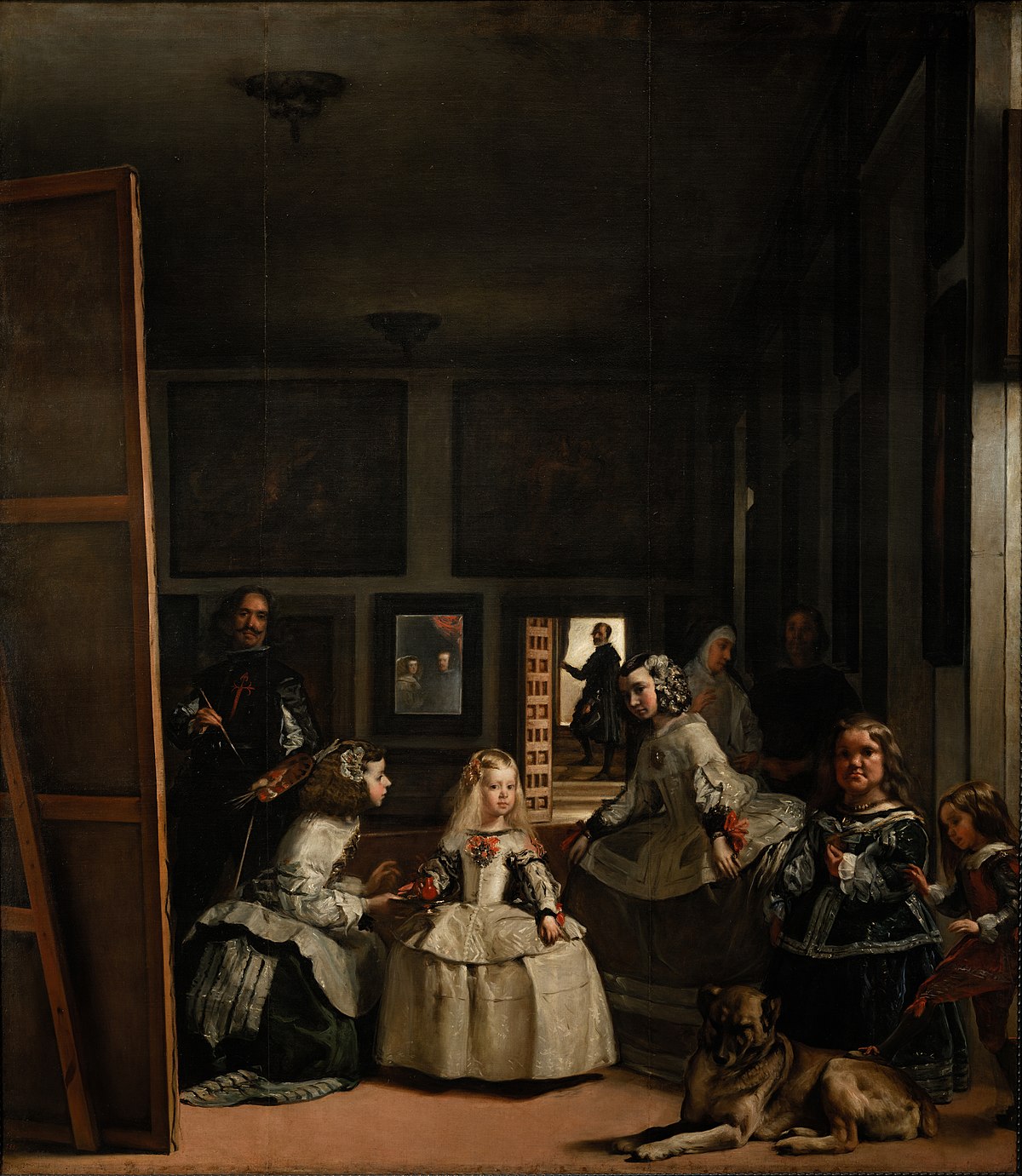Art History (Pre-Renaissance-Bourque)
1/65
Earn XP
Description and Tags
Popular pieces of art and vocab for my
Name | Mastery | Learn | Test | Matching | Spaced |
|---|
No study sessions yet.
66 Terms
Early Renaissance in Florence (1400-1500)
The start of the Renaissance was due to the revival of classical ideas from ancient Greece and Rome, the emergence of Humanism or the celebration of human potential, and the rising class of Merchants and bankers. One of the first events to define the early Renaissance was the Florence Baptistery Doors competition where different artists were competing in order to decorate the doors Lorenzo Ghiberti won the competition and was able to design the Baptistery door. Artwork that defines this period is Masaccio’s ‘Tribute Money’ and Donatello’s ‘Saint Mark’.
Linear Perspective
To represent 3-dimensional space into a 2-dimensional surface. Has elements of parallels lines converging to a vanishing point and foreshortening of objects farther in the distance.
Atmospheric Perspective
When artist attempt to represent the affect of light and vision has on a person looking at a scene where details are lost, outlines are blurred, and colors become paler the farther people look out. Attempts to be naturalistic in nature.
Contrapposto
Counterbalance is a technique artists use to make the human form look more relaxed and life-like as it posed in a counterbalance of each other with most of the weight shifted on one leg.
Lost-wax casting
A casting method where a clay core is model with wax that is then melted in order to make an hollow cast that can have melted bronze be poured into it.
Humanism
The celebration of human potential and the interest in gaining knowledge. People began to look into music, astronomy, as well as looking back to classical ideas of the past.
Lorenzo Ghiberti, Gates of Paradise, 1425-1452
Ghiberti second commission for Florence Cathedral in 1425. Depicts 10 scenes of various parts of the Old-Testament. He uses varying degrees of relief in order to show a greater sense of depth and uses vanishing point to allow greater detail in each narrative panel. It also includes a self-portrait of Ghiberti.
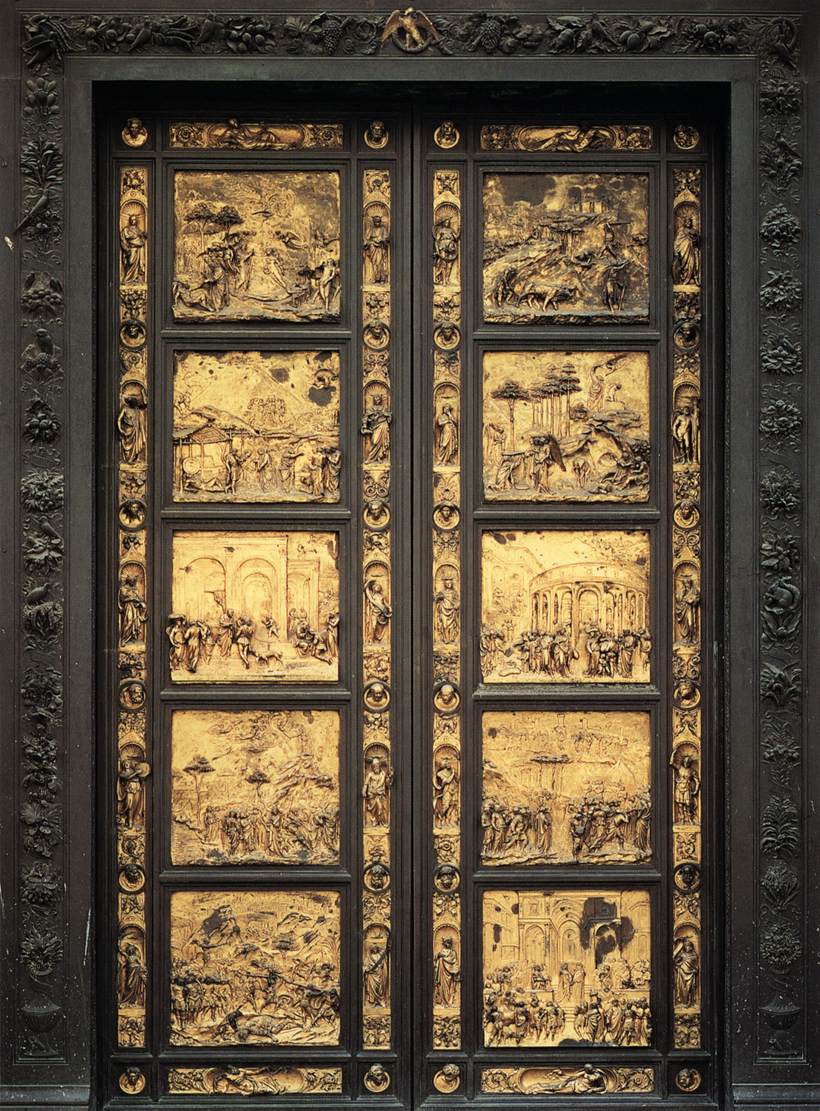
Masaccio, Holy Trinity, 1425-1427
One of the oldest surviving paints that has scientific use linear perspective. The fresco gives an illusion of a chapel on the side of a wall at Santa Maria Novella. While it depicts the Holy Trinity along with Mary and John it also depicts the donors who paid on the painting on either side.
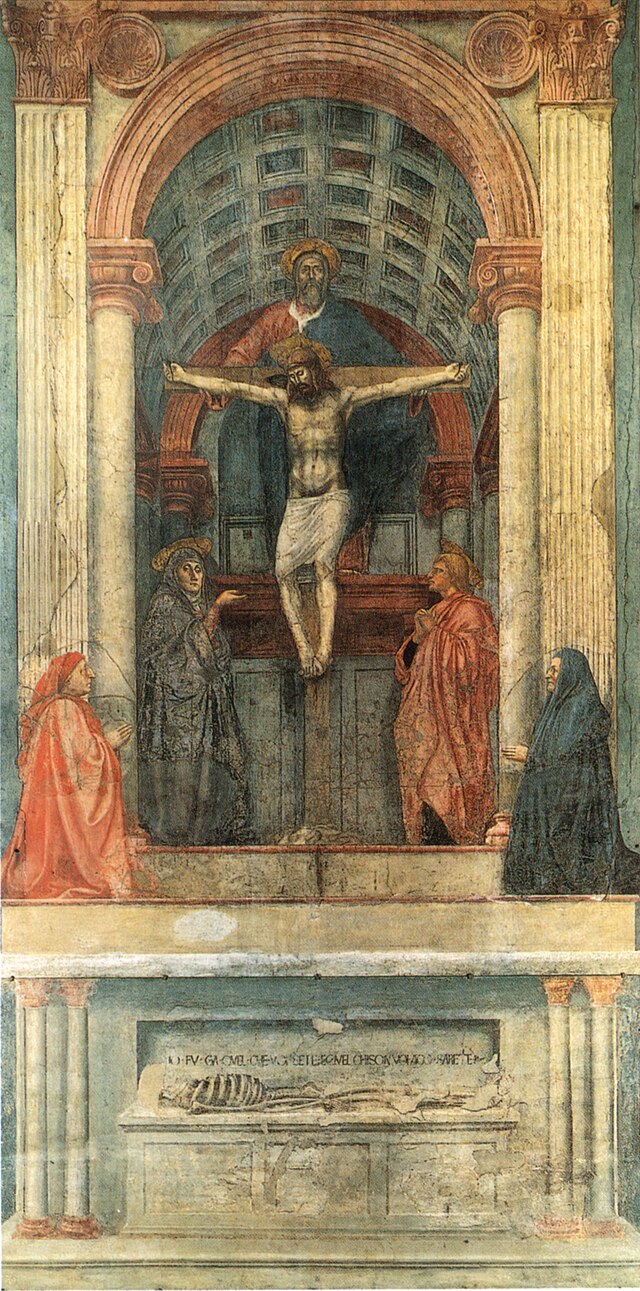
15th Century Renaissance Art in South, Central and Northern Italy (1400-1500)
Art that was commissioned by aristocratic courts and rulers such as Naples, Urbino, and Mantua. Some of the most stand-out pieces of artwork in this period are portraiture and self-portraiture. Artwork that defines this period is Piero della Francesa’s ‘Double Portrait of Battista Sforza and Federico de Montefeltro’ and Andrea Mantenga’s ‘Camera degli Sposi’.
Tromp l’oeil
Means to trick the eye and create an illusion in art in which an item looks 3D
Foreshortening
When a form is receding into a smaller space in artwork. Usually used to showcase depth as items farther from you are smaller.
Oculus
A round or circular design such as a window
Di sotto in su
Style of ceiling painting that uses the viewer's position of looking upward in order to foreshorten the ceiling figure. The phrase also means ‘seen from below’.
Leon Battista Alberti
Important Florentine architect who well known for writing On Painting in 1435 which is seen as the most important text about linear perspective.
15th Century Northern Renaissance in France, Flanders, and German
A lot of the artwork made in this period dealt with manuscripts, altarpieces, and engraving. Other elements that define this period of the Renaissance were the use of oil paint and the invention of the printing press. Many of these pieces overall were made for the middle class and aristocracy such as the Duke of Burgundy and Charles V of France. Artwork that defines this period is Jan van Eyck’s ‘Arnolfini Portrait’ and Martin Schongauer’s ‘The Tribulations of Saint Anthony’.
Triptych
Artwork that made up of three panels, can usually close in on itself
Polyptych
Artwork that usually made out of more than three panels
Tempera vs. Oil Painting
Tempera paint that is made egg and known to dry very quickly. Meanwhile oil painting usually dries out much slower. In generally oil painting usually has more saturation, transparency, and be more rich than tempera. Which is why we see a shift from tempera to oil.
Woodcut vs. Engraving
Woodcutting when relief is craved into a block of wood where the raised areas took the ink then is pressed onto paper. Meanwhile engraving would be be metal plate which would be incised into and the ink would go into the incised areas which allowed greater attention to detail in these prints.
Jan van Eyck, Ghent Altarpiece, 1423-32
One of the most celebrated polyptych masterpieces in Flemish art. When closed it depicts the annunciation of Mary on the top and the Mayor of Ghent kneeling in front of the sculptures of John the Baptist in the lower register. When opened it depicts God in the center with the Virgin and John flanking on either side. The entire piece's theme is redemption and to be saved. The use of oil painting was able to give more realism and more detail in general.
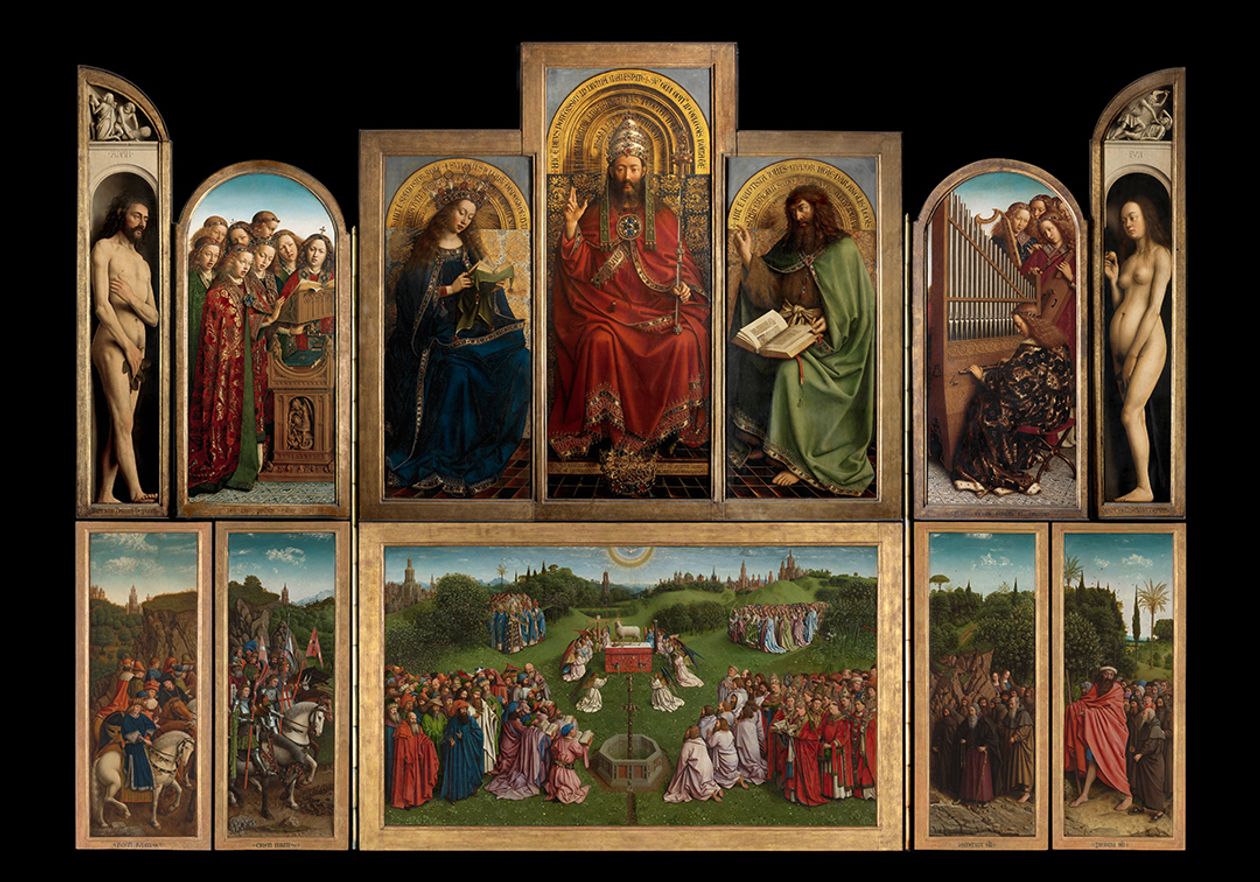
Mesoamerican and North American art (Post-1300)
Art of the Aztecs as well as the Pueblo, Great Plains, and Northwest Coast people. Each group having a wide range of art styles and beliefs based on their religious practices and geographic location. Artwork that defines this period is Otto Pentewa’s Kachina figurine and Kwakiutl Crooked Beak of Heaven Mask.
Templo Mayor
Believed to be constructed from 1350-1519 by the Aztecs (Mexica) to be dedicated to Tlaloc (god of rain) and Huitzilopochtli (god of sun). It believed that at the Templo Mayor they would do ‘ritualistic killings’ that would recreate the creation story of Huitzilopochtli. One of the most well known pieces remaining from Templo Mayor is the Coyolxauhqui Stone which depicts Huitzilopochtli sister the moon goddess being decapitated.
Kachina
Figures that are the personification of ancestors or elements such as the mountains. The word can also be used to describe the rites that are performed by male dancers to induce rain.
Hozho
Meaning health and beauty from the Dine people.
Cadzi Cody, Painted Elk Hide, 1900
A piece of native artwork that shows a mixture of native and Europeans elements which highlights the changing landscape of America with European settlers. It depicts a traditional native bison hunt but with the inclusion of guns and horses showcasing more European elements. The piece in general focusing on design and subject over naturalism and was probably made to be a reminder of better time for the Shoshone people.
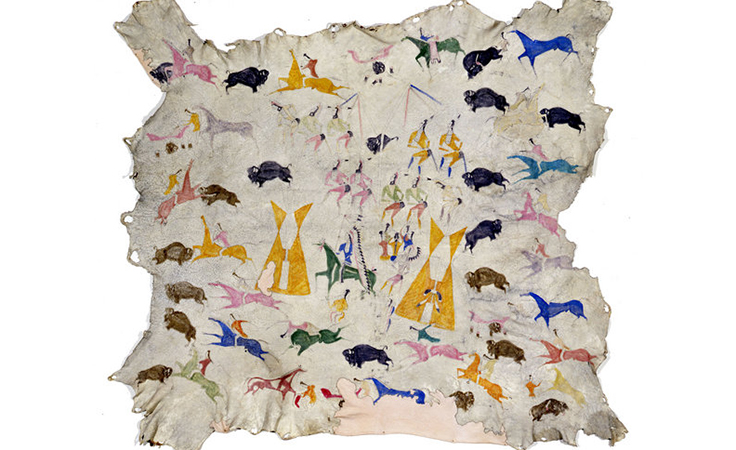
South American Artwork (1100-1550)
Focusing on the artwork of the Chimú and the Inka this period sees a wide range of monumental public art, buildings, record-keeping systems, as well as cloth-based artwork. Artwork that defines this period is the Inka’s Khipus and Machu Picchu
Adobe
Sun dried brick
Huacas (wa’kas)
Sacred sites for the Inka, can range from pyramids, mummies, rulers, springs, and mountains. One of the most famous sites for the Inka empire is Lake Titicaca were they believed the sun war born.
Tocapu
Is an Inkan tunic that made with geometric motifs in a checkerboard patterns, usually worn by rulers which signified them representing their empire.
Inlay
When a gem or a stone is embedded in material such as metal
Machu Pichu, Inka, 15th century
One of the most well known Inkan monuments that was believed to be an estate for the ruler. It had shrines, residential areas, and terraces.
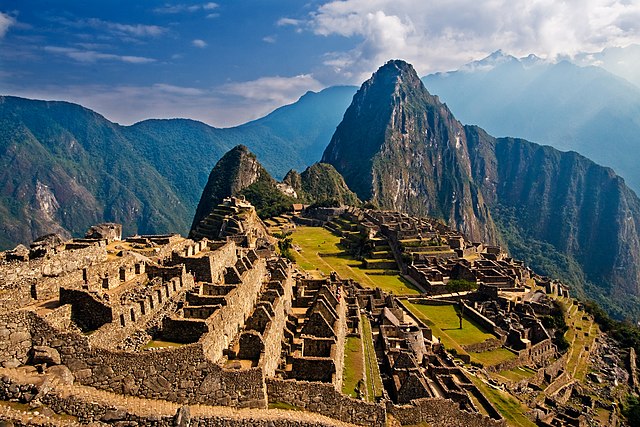
Late Imperial China (1368-1795)
The artwork of the Ming and Qing dynasties. The Ming dynasty artwork was stylized by the revival of the Imperial Academy and the ideals of the Literati. The Qing continued the importance of the literati but saw greater stability and importance of education to the general public. The artwork that defines this period is Miss Qiu’s Guayin and Longu and the Forbidden city.
Hanging Scroll
A common type of art format in East Asian painting where the painting is taller than it is wide. It can be rolled up and stored easily.
Calligraphic
Formal expressive properties of lines that can show a wide range of lines such as thickness and thinnest.
Literati
Ming Dynasty social group of officials that would not only pursued government service as a career but would go also be well verse in reading, writing, and the arts.
Hip roof
Chinese style of roofing which the roof slopes upwards from all 4 sizes. Can be seen in the Hall of Supreme Harmony.
Isometric perspective
Representing a 3-D surface where the angle of 2 or 3 coordinate axis is roughly 120 which creates receding lines but with no vanishing points.
Forbidden City, Beijing, 1697
This housed the throne of the emperor and a large courtyard for thousands to pay homage to them.
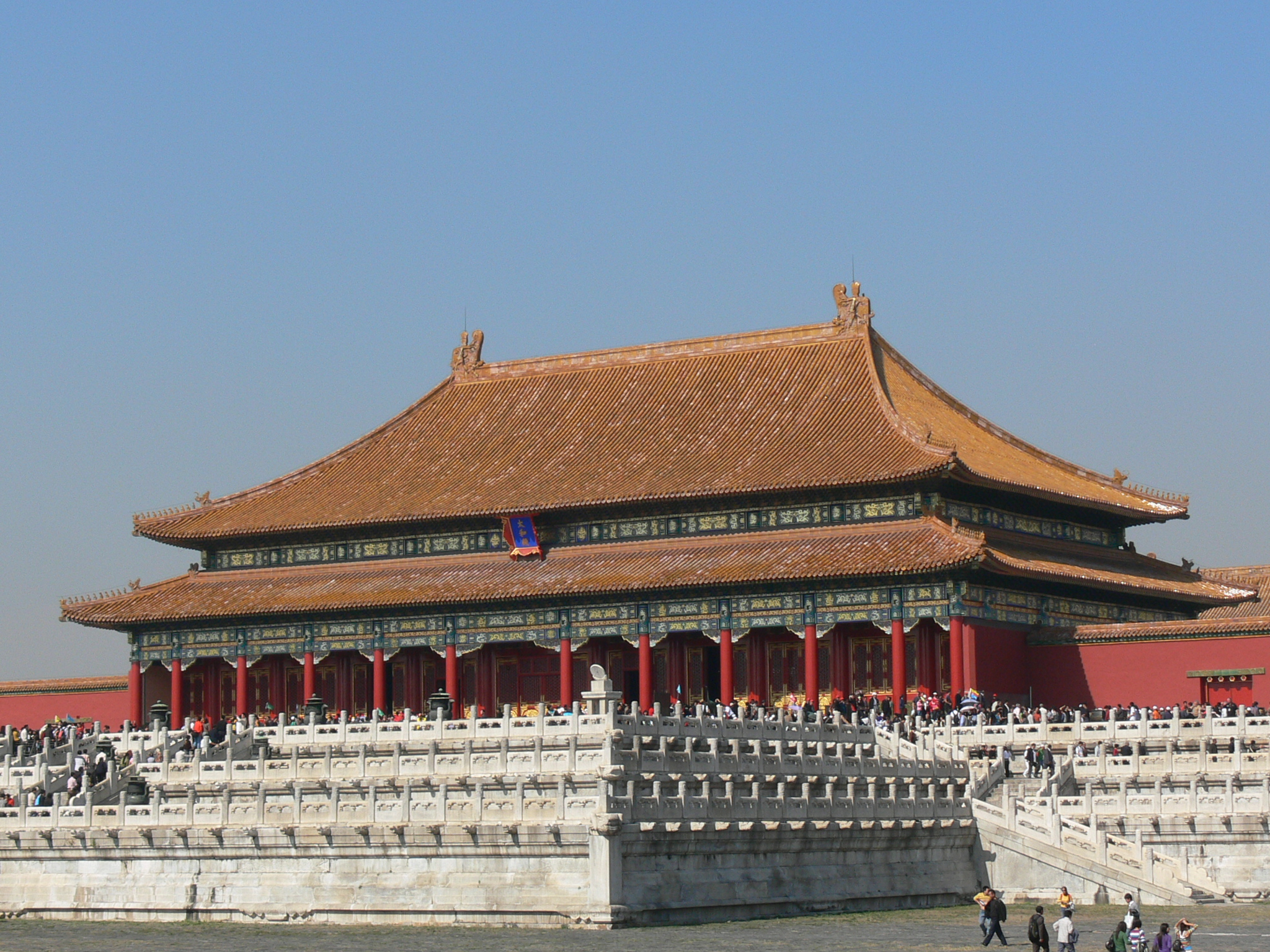
Early Modern Korean and Japanese Art (1600-1900)
Focus on the Korean Joseon and Japanese Edo period of this time. Joseon we see an interaction between elite and popular culture due to the increase of wealth. While Edo focuses on entertainment and pleasure. The artwork that defines this period is Sin Yun-bok’s ‘An Amusing Day in a Field in Spring’ and Katsushika Oi’s ‘Three Women Playing Musical Instruments’.
Jingyeong sansuhwa
“True view landscape painting” or an empirical observation that portray real life landscapes in a way that make it recognizable to the viewers.
Shinkeizu
The term used in the Japanese Edo Period. It means the true view landscape.
Ukiyo-e
The “Floating world” or material world in Edo Japan. The concept mostly depicts the materialistic aspects of Japan during this time with the rise of entertainment districts.
Cartouche
In pieces of Japanese art where there a rectangular box in the top right of pieces usually with a short phrase or identifying phrase.
Hokusai, Under the Wave off Kanagwa, 1830-32
One of the most well known Japanese wood prints out there, depicts great waves in front of Mount Fuji. Display a lot of intensity and emotion especially as it depicts fishermen fighting against the waves.
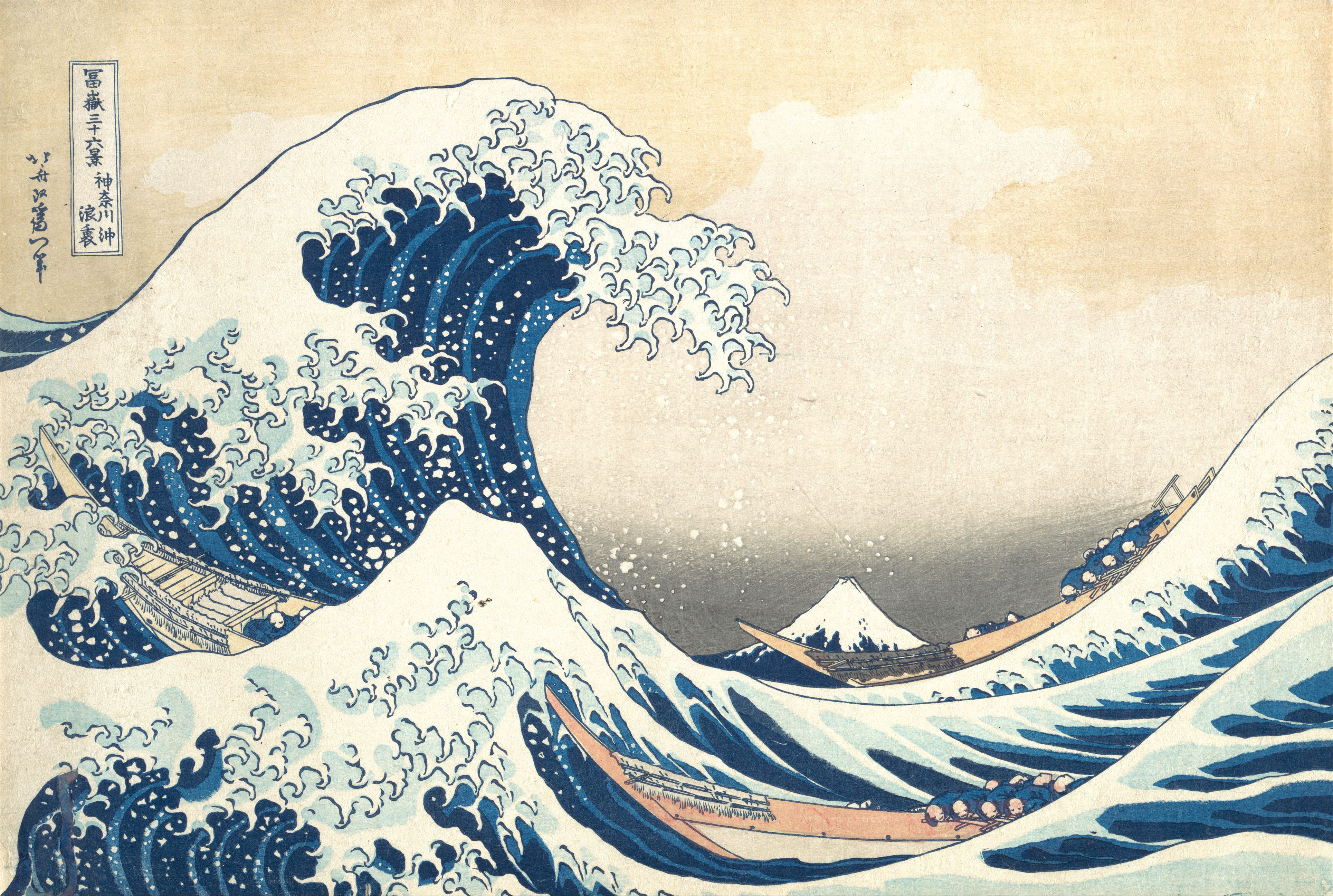
High Renaissance
We see here the scientific field’s use of observations being transferred into the artwork in order to heighten the naturalism desired in the artwork. The artwork that defines this period is Leonardo de Vinci’s Mona Lisa and Michelangelo’s David.
Chiaroscuro
The contrast of light and dark elements in painting in order to create volume and depth in a piece.
Sfumato
Atmospheric haze put on painting that gives it a smokey and haze feel akin to dusk.
Vitruvius
Roman architect who Leonardo read in order to get a greater understanding of his ideals as he believed human body as a source of inspiration for human architecture
Leonardo da Vinci, The Last Supper, 1495-1498
One of Leonardo's masterpieces where he uses a mixture of oil and tempera paint in order to create subtler shading and shadowing. It gives the whole painting more variation in tone and a good sfumato effect. It depicts Christ in the center in a triangular pose which helps anchor the composition which is supported by the three background figures and setting of the apostles on either side.

Michelangelo, The Creation of Adam, Sistine Chapel, ceiling, 1508-1512
A scene from Sistine Chapel piece where it depicts the creation of Adam as he reaching his hand out to god. Adam is laying on a representation of earth and is overall in a languid position. Meanwhile God depicted as the idealized human with figures surrounding him such as a woman that possibly Eve and child Christ. The overall piece about redemption and salvation of human kind and praised for it emotions and drama.
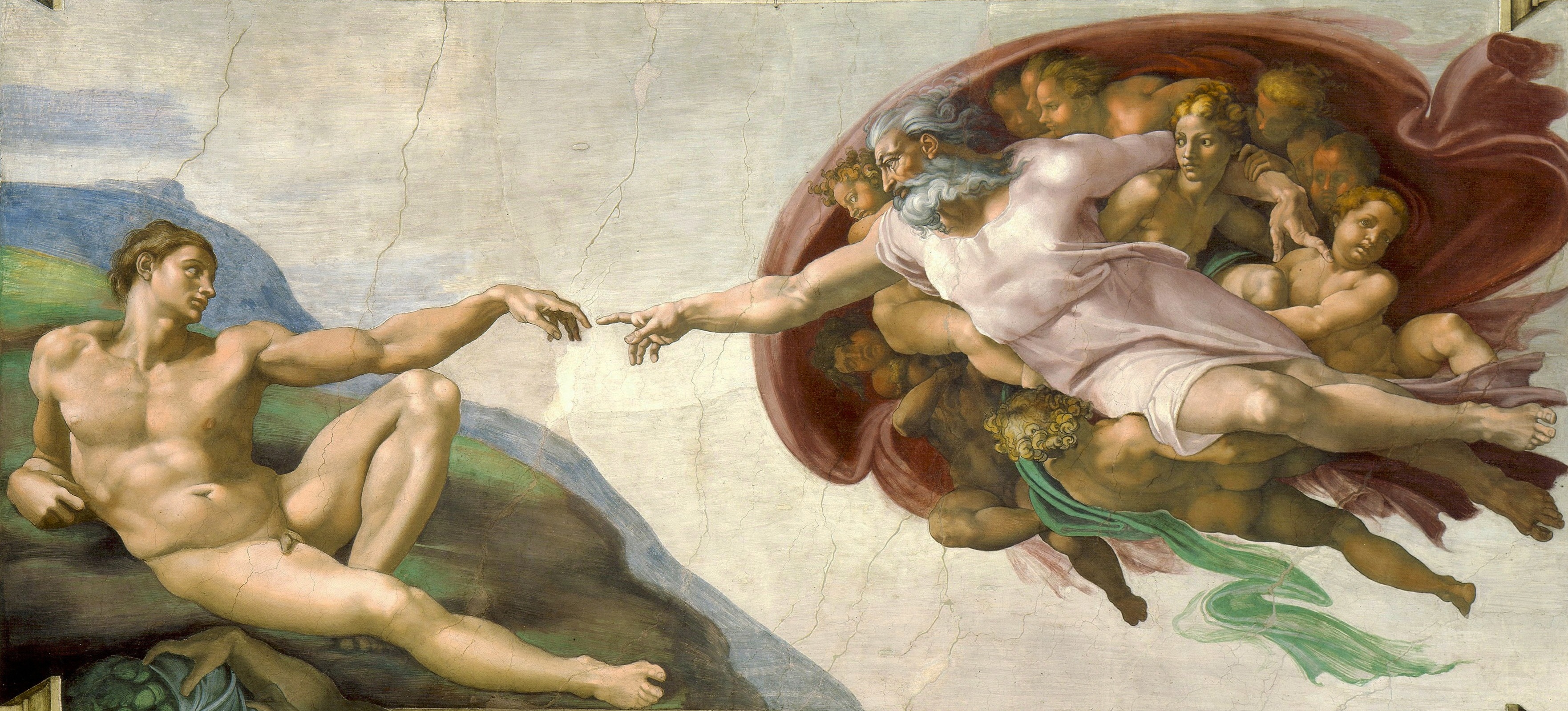
Raphael, The School of Athens, 1510-1511
Painted in the Vatican Palace as a representation of Philosophy where it depicts Greek philosophers. It has many key Greek figures such as Plato and Aristotle depicted as representation of reasoning. Another key detail to point out is many of the figures in the painting are based off other famous Renaissance artist such as Leonardo, Michelangelo, Raphael and Bramante. There also a use of vanishing point in order to create greater depth and make a very complex scene.
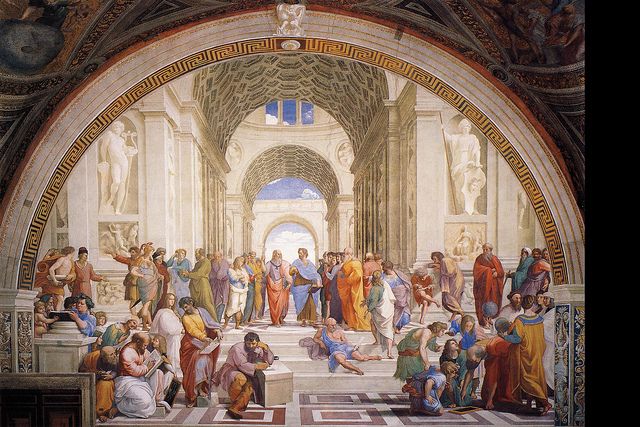
Protestant Reformation (1517)
Movement that began in Germany where the Priest Martin Luther published his 95 theses where he argued that the Catholic Church is corrupt. This led to a chain reaction throughout Europe where Martin Luther was excommunicated from the Church and began his own religious movement.
Martin Luther
Germany priest who wrote the 95 Theses that were first published on the door of Wittenberg Church.
Mannerism
Art with the elements of asymmetry, tension, and artificial elegance, it usually was a challenge of classical aesthetics used in Renaissance art.
The Counter Reformation
When the Pope established a council in 1545 were we see the Pope try to find ways to bring back people to the catholic church. This is shown through art as they commissioned art that would heighten the people involvement and remind them of their faith.
Council of Trent
The council that was formed by the Pope in 1545 that lasted for 25 sessions where they fix they clarified the Church doctrine and reestablished their religious importance.
Titian, Venus of Urbino, 1538
Commissioned by the Duke of Urbino and believe to be a depiction of his wife or a courtesan, it was named a Venus after the fact. The painting has elements of fertility and marriage with the flowers and fidelity with the dog. Giving credence of this being a marriage portrait. We also see a use of chiaroscuro and sfumato to soften the women look.
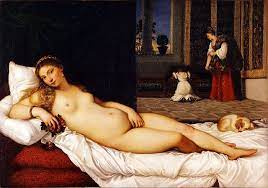
Andrea Palladio, Villa Rotunda, 1560
Was built forty miles outside of Venice and was made with the elements of Roman architecture such as a perfect circle in a perfect square where there a centralized plan that has 4 facades.
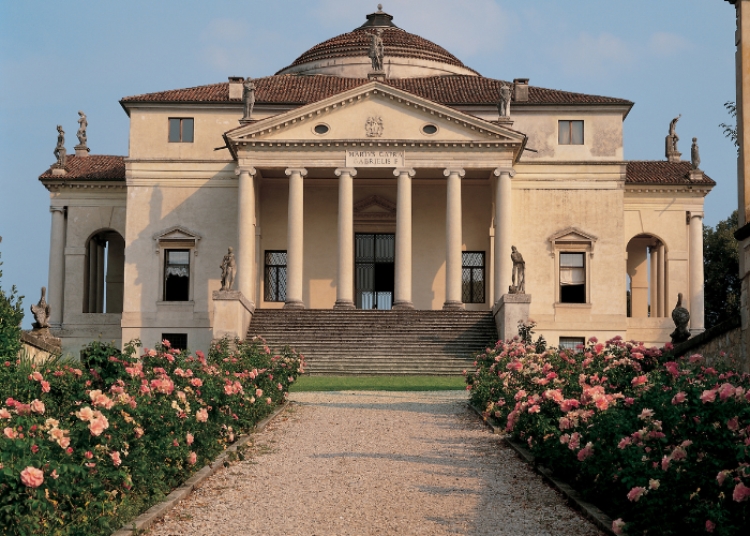
Mosque
Religious holy sites for the Islamic faith
Kufic
One of the oldest Arabic scripts that is more angular in style. Used in Islamic art to quote phrases from the Quran.
Tughra
Unique signatures or emblems of Ottoman Empire sultans, each on would include their name, their father name, and a saying. This emblem would be use to established authentication that the ruler himself signed an item.
Minaret
Towers that surround the Mosque that calls for Muslims to pray.
Arabesque
Ornamental designs such as lines and leaves in order to depict a garden detailing
Tenberism
Pronounced chiaroscuro where the contrast of light and dark are far more dramatic in order to invoke more emotion.
Raking light
Illumination of an object from a light source at an oblique or parallel angel to make a picture plane.
Diego Velazquez, Las Meninas (The Maids of Honor), 1656
Consider Diego Velazquez masterpiece that depicts Princess Margret with her maids. There is a sense of ambiguity when it comes to the subject matter on what it suppose to mean but it masterfully makes a self, group, and general scene painting into one huge painting. It gives a complex scene with abstraction and use of free and loose strokes on the Princess herself in a masterful level.
